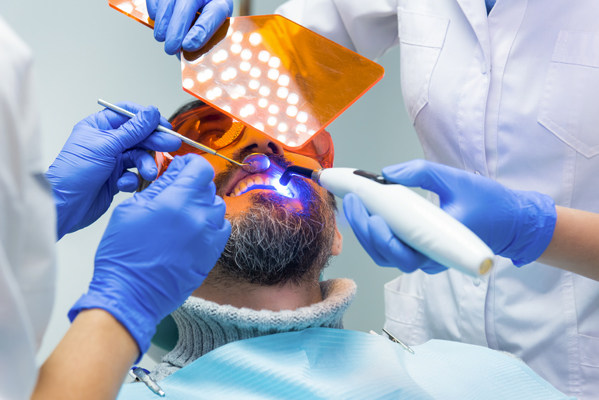You are probably familiar with dental bonding as a way to repair cosmetic tooth concerns. The dentist will also use this to treat and repair cavities and other common dental health problems. There are many reasons why this approach is so common among patients of all ages. Before getting this treatment, your dentist will discuss how the process works and what benefits bonding has.
When the dentist will use dental bonding
Patients who come to the dentist’s office with cavities are familiar with bonding. After drilling into the patient’s tooth to remove the decay, the dentist will use the bonding material to fill the hole. Bonding can also be the right choice to repair minor fractures, chips, and cracks in the teeth. People who have large spaces between teeth can also fill them with bonding. For discoloration problems, the dentist can also use bonding material instead of teeth-whitening treatments.
Longevity
Dental bonding is made of composite resin. The dentist can use a color shade of bonding to closely match the appearance of the surrounding teeth. The bonding, however, is not permanent, though it should last for years to come. With good care, a patient can expect this treatment to be effective and stay in place for 10 years or more. Compare this with other options such as veneers or crowns, which can last 15 years or more. It is more prone to chipping and breaking than these other treatments too.
The process
One of the most significant advantages of choosing dental bonding to repair teeth is that it is faster than other approaches. The dentist must make crowns and veneers in a lab, meaning it could take two or three appointments to complete the process. The bonding occurs directly in the office, often in less than an hour. There is also less of a financial commitment to getting bonding to treat teeth.
To fill a cavity, the dentist will first numb the patient with a local anesthetic. This may not be required if the dentist is using the bonding to repair cosmetic damage. Before applying the composite resin, the dentist may reshape the teeth and etch it to make it rougher. Once the dentist puts the bonding on the tooth, a light will harden it.
Maintaining the bond
To get good results from dental bonding, the patient should be cautious about eating certain foods. Hard items such as candy, popcorn kernels, and ice can break the bonding. The patient should avoid chewing on objects and using teeth to open packages. It is important to continue brushing and flossing daily to maintain healthy teeth.
An effective way to repair teeth
Even though dental bonding will not last forever, it can be a good restoration choice. Your dentist will help you decide whether this intervention makes the most sense for your needs. The bonding material is natural-looking and can restore your smile. If you have a crack or any other visible issues, talk to your dentist today about whether you are a good candidate for this treatment.
Request an appointment here: https://www.nolanriverdentalcenter.com or call Nolan River Dental Center at (817) 517-6453 for an appointment in our Cleburne office.
Check out what others are saying about our dental services on Yelp: Dental Bonding in Cleburne, TX.
Related Posts
Cosmetic Dental Reasons to Get Dental Bonding
Getting dental bonding can be a good way to improve your smile. It can be hard to know the right time to get it, however. The right way to determine if you …
How Dental Bonding Is Used to Fix Damaged Teeth
Dental bonding is one of the most highly recommended methods of repairing damaged teeth. It is a low cost and minimally invasive procedure and can restore the appearance of your smile. Learning …
Dental Bonding vs. Contouring
Wondering whether you should choose dental bonding services or dental contouring services to repair one or more issues with your teeth? These two popular cosmetic options both work to improve the …
Is Dental Bonding in Cleburne, TX Permanent?
Dental bonding involves a dentist applying a tooth-colored, special resin to a tooth that needs fixing. It is used to hide defects and abnormalities on a tooth or simply to improve the way it looks. …



